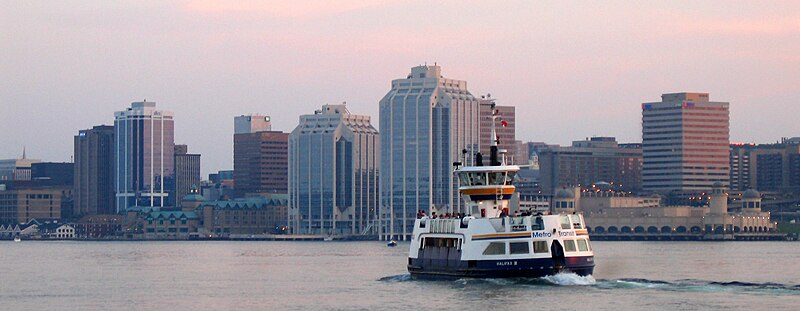About Our Local Area
Dartmouth
 Dartmouth founded in 1750, is a former city and planning area of the Halifax Regional Municipality, Nova Scotia. Located on the eastern shore of Halifax Harbour, Dartmouth has been nicknamed the City of Lakes after the large number of lakes located in the city. On April 1, 1996, the provincial government amalgamated all the municipalities within the boundaries of Halifax County into a single-tier regional government named Halifax Regional Municipality (HRM). While Dartmouth and its neighbouring city of Halifax, the town of Bedford and the Municipality of the County of Halifax were dissolved at this time, the former city forms part of the urban core of the larger regional municipality and is officially labelled the "capital district" by the HRM government. At the time that the City of Dartmouth was dissolved, the provincial government altered its status to a separate community to Halifax however its status as part of the metropolitan "Halifax" urban core existed prior to municipal reorganisation in 1996. Dartmouth is still the geographic name that is used by all levels of government for mapping, 9-1-1, planning, and is recognised by the Halifax Regional Municipality as a place-name for civic addressing. The official place name did not change due to the confusion with similar street names and planning set out by the "City of Dartmouth" and public pressure. Today the same development planning for Downtown Dartmouth and the rest of the community is still in force as well as specific bylaws created prior to April 1, 1996.
Dartmouth founded in 1750, is a former city and planning area of the Halifax Regional Municipality, Nova Scotia. Located on the eastern shore of Halifax Harbour, Dartmouth has been nicknamed the City of Lakes after the large number of lakes located in the city. On April 1, 1996, the provincial government amalgamated all the municipalities within the boundaries of Halifax County into a single-tier regional government named Halifax Regional Municipality (HRM). While Dartmouth and its neighbouring city of Halifax, the town of Bedford and the Municipality of the County of Halifax were dissolved at this time, the former city forms part of the urban core of the larger regional municipality and is officially labelled the "capital district" by the HRM government. At the time that the City of Dartmouth was dissolved, the provincial government altered its status to a separate community to Halifax however its status as part of the metropolitan "Halifax" urban core existed prior to municipal reorganisation in 1996. Dartmouth is still the geographic name that is used by all levels of government for mapping, 9-1-1, planning, and is recognised by the Halifax Regional Municipality as a place-name for civic addressing. The official place name did not change due to the confusion with similar street names and planning set out by the "City of Dartmouth" and public pressure. Today the same development planning for Downtown Dartmouth and the rest of the community is still in force as well as specific bylaws created prior to April 1, 1996.

Economy
The city was not only a bedroom community for Halifax but also had commerce and industries of its own, including the Volvo Halifax Assembly plant, a molasses plant dating back to the days of the triangular trade with the West Indies, the shopping district of Dartmouth Crossing, as well as many federal government jobs.
Military
Dartmouth has been home to several Canadian Forces installations:
- CFB Shearwater, located on the southern border of Dartmouth is an air force base, formerly known as Naval Air Station Halifax, RCAF Station Dartmouth, RCAF Station Shearwater, HMCS Shearwater, and RCNAS Shearwater.
- HMC Naval Radio Station Albro Lake, a radio transmitter/receiver facility.
- CFB Halifax adjunct, an area on the Dartmouth waterfront opposite HMC Dockyard.
- Wallace Heights, a former military housing area in north-end Dartmouth
- Shannon Park, unused military housing area in north-end Dartmouth.
- Canadian Forces Ammunition Depot Bedford, a munitions magazine for Maritime Forces Atlantic, located on the border between Dartmouth and Bedford.
Transportation and communications
 Transportation
Transportation
Dartmouth is linked to Halifax by the oldest continuously operating salt water ferry service in North America with the first crossing having taken place in 1752. Early ferries were powered by horses, which were replaced with steam engines in 1830. During the early 20th century, ferries shuttled pedestrians and vehicles between the downtown areas of Halifax and Dartmouth. A railway trestle was built across Halifax Harbour in the late 19th century to bring rail service to Dartmouth however it was destroyed by a storm, requiring the present railway connection built around Bedford Basin.
During the early 1950s, construction began on the Angus L. Macdonald Bridge, a suspension bridge crossing Halifax Harbour. It opened in 1955, ushering in an unprecedented development boom in Dartmouth. New subdivisions, shopping centres, office buildings and industrial parks have been built in recent decades. A second bridge, the A. Murray MacKay Bridge was opened in 1970 and the Highway 111 Circumferential Highway was built around Dartmouth to Woodside at this time.
Natal Day
Dartmouthians have celebrated a civic holiday known as "Natal Day" since August 1895. The concept originated as a means to celebrate the arrival of the railway, but construction of the railway tracks was incomplete on the appointed day. Since all the preparations for the festivities were ready, organisers decided to go ahead with a celebration of the municipality's birthday instead.
In 1941, the Dartmouth Natal Committee decided to erect a cairn in honour of the spirit and courage of the first settlers to Dartmouth's shore. It is situated in Leighton Dillman Park, part of the common lands left to the community by the Quakers, and it overlooks the harbour where the first settlers built their homes. The monument stands three meters high and is constructed from rocks gathered on Martinique Beach. A plaque in front of the cairn is inscribed and describes the arrival of the Alderney "on August 12, 1750 with 353 settlers."
Urban area communities and neighbourhoods
- Albro Lake
- Burnside
- Dartmouth Crossing
- Downtown Dartmouth
- Russell Lake West
- Tuft's Cove
- Woodlawn
- Woodside
The oldest structure in Dartmouth is the house of William Ray, one of the whalers. It is located at 59 Ochterloney Street and is believed to have been built around 1785 or 1786. Today it is a museum, furnished as a typical modest dwelling of a merchant of that time.
Dartmouth's first city hall was built in the early 1960s on land with the Dartmouth Common. On May 4, 2007, a Halifax Regional Municipality news releases stated that the building was to be demolished. The land has since been restored to parkland.
Dartmouth is nicknamed "The City of Lakes". Boasting 23 lakes within its boundaries, Dartmouthians take special pride in the chain of lakes within its boundaries that form part of the Shubenacadie Canal. Most famous amongst these is Lake Banook, which provides an excellent location for recreation as well as attractive vistas. Dartmouth's most historic body of water is the artificial Sullivan's Pond, located north-east of the downtown area on Ochterloney Street. It was dug in the 1830s as part of the Shubenacadie Canal to connect Halifax Harbour with Cobequid Bay on the Bay of Fundy.
Information and images courtesy of Wikipedia.com
Need More Information On Living In The Darmouth Area?
Please provide us with your contact information and we can provide you with the information you require
Need More Information On Living In The Darmouth Area?
Please provide us with your contact information and we can provide you with the information you require










